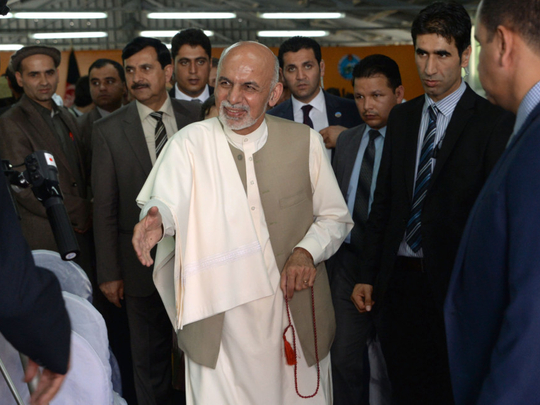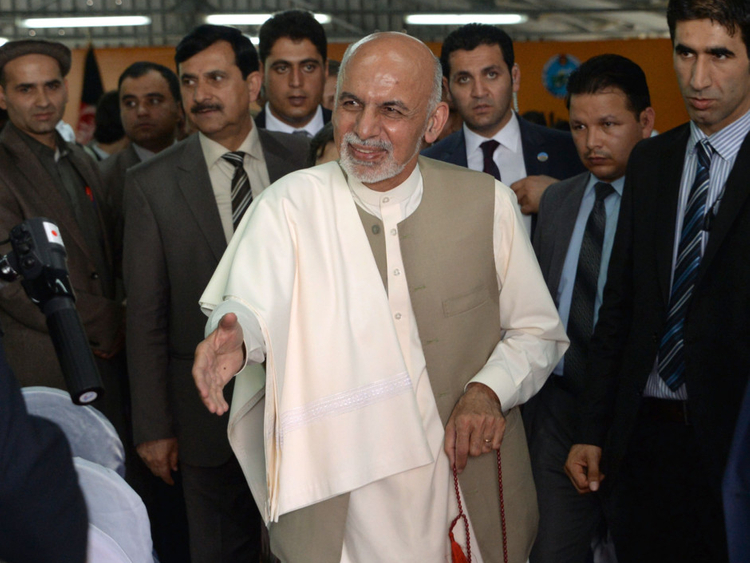
The US government was already reviewing its troop withdrawal plan in view of the deteriorating security situation in Afghanistan. But by capturing Kunduz on September 28, the Taliban forced President Barack Obama to quickly decide to slow down the pullout of the remaining American soldiers from the war-ravaged country.
Under the new plan, US troops would drawdown to 5,500 — starting sometime in 2017 — and would be deployed at Kabul, Bagram, Kandahar and Jalalabad. Previously, the plan was to reduce the number of troops to 1,000 based at the United States Embassy in Kabul by the time Obama leaves office in January 2017.
Though Obama termed it a “modest but meaningful” adjustment to winding down the US military presence in Afghanistan, it was in effect a reversal of his policy. His announcement meant prolonging the 14-year-old war, the longest in the history of the United States, and handing over the task of pulling out troops to his successor. In case his successor is a Republican, there could be a further prolongation of the war in Afghanistan as the Republicans have criticised Obama for devising a premature troop pullout plan that emboldened the Taliban.
Besides announcing that the US would maintain a force of 9,800 in Afghanistan through most of 2016, Obama sent a clear message to the Taliban that they could only achieve their goal of complete withdrawal of foreign forces by agreeing to a settlement with the Afghan government. It meant the Obama administration hasn’t ruled out the possibility of a negotiated solution involving the Taliban to end the Afghan conflict. This despite the recent fiery statements by Afghan President Ashraf Gani not to ask Pakistan again to facilitate peace talks between his ‘unity’ government and the Taliban. Three bomb explosions in a day on August 6 in the Afghan capital of Kabul, including one that killed and injured scores of civilians, made Gani angry with Pakistan for allowing the Taliban leadership to operate from its soil and resulted in an all-time low level of trust between the two neighbouring countries. Unless Islamabad and Kabul overcome the distrust, reviving peace talks and making them a success will remain a difficult proposition.
Obama’s decision wasn’t unexpected. The Taliban attacks had increased since 2014, when most US-led Nato forces pulled out of Afghanistan. The security transition to the Afghan National Security Forces was completed, but it caused a record rise in the number of casualties to the Afghan soldiers, police and militiamen. As Obama observed, the security situation in Afghanistan had become fragile and the Afghan security forces didn’t perform as well as they needed to.
A recent assessment report by the United Nations Assistance Mission in Afghanistan (Unama) noted that Taliban insurgency has spread through Afghanistan now, more than at any point since 2001 when the US forces invaded the Taliban-ruled country to avenge the 9/11 attacks by going after Al Qaida and the Taliban. The report said Unama had evacuated four of its 13 provincial offices around the country by early September due to security concerns. This was the most it had ever done for security reasons. The report said UN security officials rated the threat level in about half of the country’s administrative districts as either “high” or “extreme”, more than at any time since December 2001 when the Taliban lost power.
The UN assessment is at odds with the one made by the US military commander in Afghanistan, General John Campbell, who, in his recent testimony to the US Congress, gave a more positive outlook regarding the security situation in the country. The UN assessment was compiled in early September, before the fall of Kunduz to the Taliban, when the security situation wasn’t as alarming as it is now. Though the Taliban lost control of Kunduz after three days, they followed it up with attacks on several district headquarters and even made assaults on Gazni city and Maimana — the provincial capital of Faryab. The attacks were mostly carried out in northern Afghanistan, populated largely by non-Pashtun ethnic groups such as the Tajiks, Uzbeks, Turkmen and Hazaras who have traditionally been opposed to the predominantly Pashtun Taliban. However, the growing Taliban strength in the north reinforced the view that non-Pashtuns too were joining Taliban ranks.
As expected, some of the Nato member countries reportedly expressed willingness to keep the deployment of their troops in Afghanistan at current levels to assist the US in enabling the Afghan government to fight the Taliban. The US and its Nato allies don’t have much of a choice but to continue military and economic assistance for the foreseeable future to the Afghan government, which can raise only around one billion dollars (Dh3.67 billion) in annual revenue and must spend more than $4 billion on its army and police forces. However, one may well ask for how long the western nations would be required to bankroll and sustain the Afghan government in power. With no military solution in sight, the need for a political settlement with the Taliban will have to be explored with a sense of urgency. Otherwise, the bloodletting in Afghanistan will continue and the sufferings of the Afghan people won’t end any time soon.
Rahimullah Yusufzai is a senior journalist based in Peshawar.










